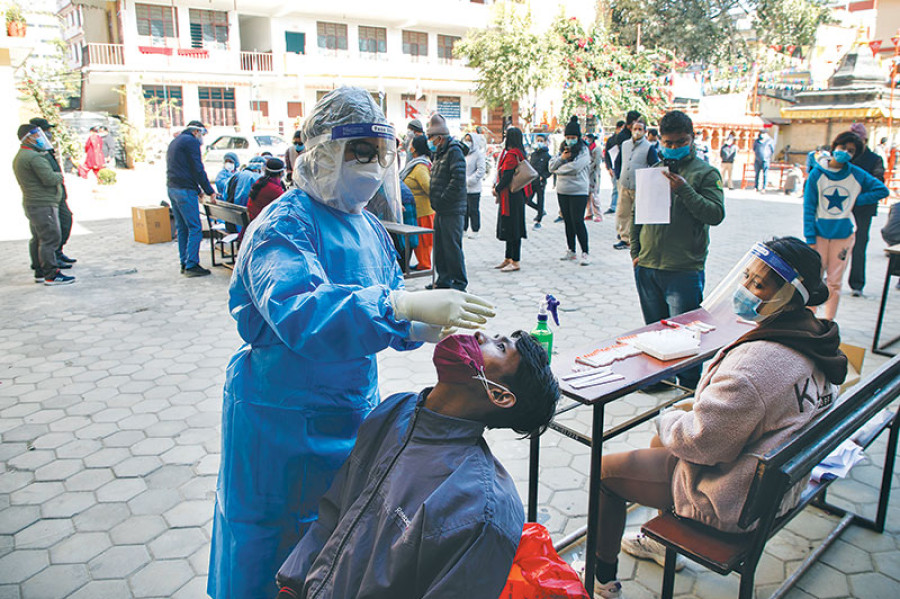Editorial
Show us the numbers
The government cannot withhold survey results that don’t suit its narrative.
A study of seroprevalence of antibodies against Covid-19 among possible cases in Nepal, conducted by the Ministry of Health and Population, with technical as well as financial support from the World Health Organisation, has revealed that around one in eight people in the country had contracted the coronavirus until September. As per the study, 13 percent of the country's population was found to have been infected with the coronavirus, Province 2 had the highest prevalence of seroprevalence, followed by Bagmati Province, Province 1, Lumbini Province, Gandaki Province, Sudurpashchim Province and Karnali Province. The study shows the coronavirus situation was already alarming months ago.
The seroprevalence survey uses antibody tests to estimate the percentage of people in a given population who have been infected with the virus. Since it uses a wide range of variables in collecting samples, including geography, age group and gender, even a small sample is considered to indicate the extent of infection among a larger population. Until the government explains it otherwise, the prevalence of coronavirus antibodies in 13 percent of the participants shows the extent to which the virus has penetrated the country. Moreover, if the situation was so dire in September, it could have become worse now. What is interesting is that as of the time when the study was being conducted, the Health Ministry was saying that there had been no community transmission.
The situation has probably got much worse now since the government has effectively stopped free testing and contact tracing of asymptomatic cases, fewer asymptomatic cases are being reported. As of Thursday, Nepal's coronavirus tally stands at 237,589 infections and 1,551 deaths. The country has seen 1,343 new cases and 13 new deaths in the past 24 hours. The ministry wants us to believe that the number of new infections has been consistently declining, without mentioning that fewer numbers of tests are being conducted in the past several weeks. However, that the number of coronavirus cases might have been increasing day by day in subterranean form, considering how the government has opened almost all sectors of national life, including tourism, public transport, and examination centres without imposing strict safety protocols.
And yet, the government has not thought it necessary to inform the public about the findings of the study as important as this. Nor has it thought it necessary to explain why the information is being withheld. The government's surreptitious behaviour in withholding this information, months after the study was conducted, gives enough room to suspect that it believes there has been a serious flaw in the study as it has shown a higher percentage of seroprevalence as compared to other countries: The United States had a seroprevalence of 9.3 percent, Switzerland had 8 percent, the United Kingdom had 7 percent, and Belgium had 5 percent. Or perhaps it believes the findings are, in fact, true and that it wants to hide the fact that the pandemic situation in Nepal is worse than it would have us believe. Whatever its explanations, the government must immediately inform the public about the findings of the study. The government cannot continue to hide the results of a survey conducted to assess the pandemic situation just because they do not support its narrative.




 19.12°C Kathmandu
19.12°C Kathmandu














